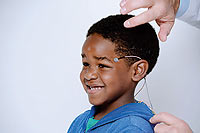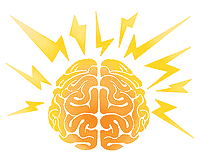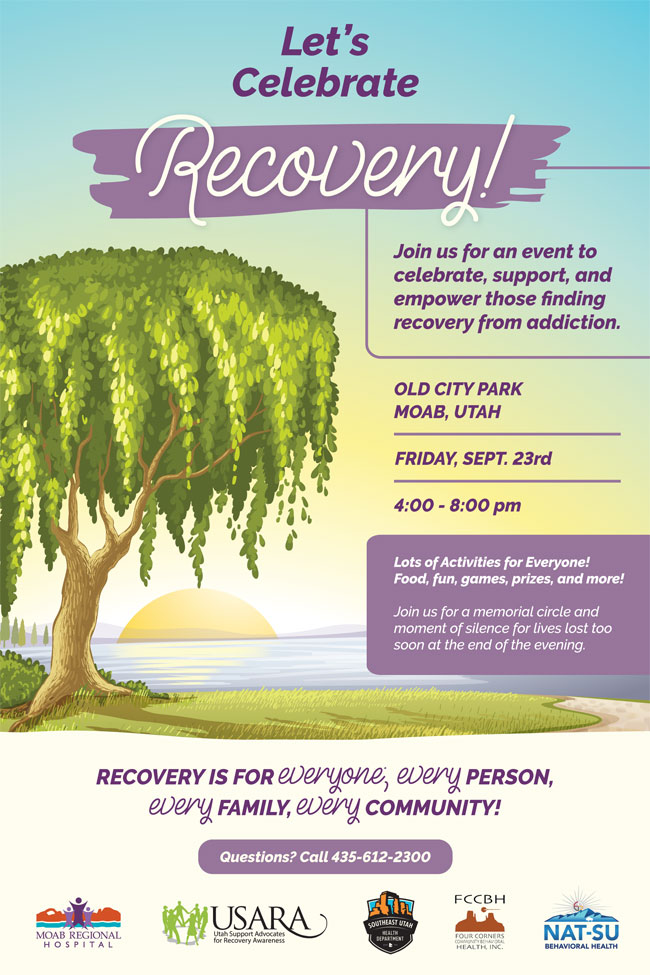|
|
HEALTHY HAPPENINGS - September 2022
|
Retrain Your Brain
by Ray Andrew, MD
|
 I was horrified as Angela (not her real name) and her husband recounted their experience with ECT (electroconvulsive therapy). I had witnessed ECT during my psychiatry rotation in residency training. In a nutshell, a severely-depressed patient who fails to get better on psychotherapy and every imaginable drug is put under general anesthesia and treated with electrical shocks that cause seizures. Even watching the process is unpleasant to say the least. But I have to admit it’s better than committing suicide when there is no other known option. Think of it as seeing the blue screen of death on your computer: Your only hope of recovering its function is to turn it off, wait a minute, turn it back on, and pray. I was horrified as Angela (not her real name) and her husband recounted their experience with ECT (electroconvulsive therapy). I had witnessed ECT during my psychiatry rotation in residency training. In a nutshell, a severely-depressed patient who fails to get better on psychotherapy and every imaginable drug is put under general anesthesia and treated with electrical shocks that cause seizures. Even watching the process is unpleasant to say the least. But I have to admit it’s better than committing suicide when there is no other known option. Think of it as seeing the blue screen of death on your computer: Your only hope of recovering its function is to turn it off, wait a minute, turn it back on, and pray.
So when Angela informed me that she had been treated with ECT, I knew she wasn’t exaggerating about how severe her depression was. She underwent two dozen weekly ECT treatments. At first, they were a miracle. But the suicidal thoughts soon returned, and they no longer responded to ECT, so she declined her psychiatrist’s recommendation to keep doing it.
 By this time, there was no lasting benefit. But the treatments were not without lasting effects. The first ten sessions caused her to lose memory of the most recent two years of her life. She no longer knew anyone she met during that time. She could not recall anything that happened during that time. And she could not remember anything she learned during that time. ECT was truly life-changing for Angela, just not in the way she and her family had hoped. This was not the reboot she needed. By this time, there was no lasting benefit. But the treatments were not without lasting effects. The first ten sessions caused her to lose memory of the most recent two years of her life. She no longer knew anyone she met during that time. She could not recall anything that happened during that time. And she could not remember anything she learned during that time. ECT was truly life-changing for Angela, just not in the way she and her family had hoped. This was not the reboot she needed.
Fortunately, we have many tools now that were either unavailable or not widely known in 2014. We also have a much greater understanding of the causes of mental health problems. The fact that traditional psychiatrists continue to rely solely on chemicals and psychotherapy to treat mental illness simply reinforces the Institute of Medicine’s 2001 conclusion that standard-of-care medical practice lags an average of 17 years behind published scientific findings.
Whereas traumatic and other unpleasant experiences often trigger or at least contribute to mental health challenges, many people with mental illness actually have no obvious cause…until a proper functional medicine investigation is performed. Then we discover hormonal, nutritional, metabolic, infectious, and/or toxic causes. Simply calling mental illness “genetic” or “a chemical imbalance” robs you of the opportunity to truly heal.
But the concept of rebooting the brain isn’t entirely dead. What if we could reboot the brain using tiny electrical currents that you cannot feel rather than using very risky shock treatments? With the IASIS Micro Current Neurofeedback device, we can do just that. And patients do not have to expose themselves to the risks of anesthesia, either. The procedure takes place in a comfortable office setting while you relax for a few minutes.
 IASIS MCN causes brief micro current stimulation (3 trillionths of a watt) to the nervous system, resulting in a temporary fluctuation in brainwaves. This change enables the brain to reorganize itself. IASIS MCN causes brief micro current stimulation (3 trillionths of a watt) to the nervous system, resulting in a temporary fluctuation in brainwaves. This change enables the brain to reorganize itself.
Unlike traditional neurofeedback, IASIS requires no effort on the patient’s part. Sessions are much shorter. Far fewer sessions are required for enduring improvement. And nine out of ten patients notice benefits immediately or within the first few sessions.
IASIS Neurofeedback does not train the brain like traditional neurofeedback. Rather, it “disentrains” the brain by allowing it to reorganize itself and shift from its formerly fixed patterns to a state of healthy balance. IASIS enables people to reboot their brains without losing their memory.
But you don’t have to be depressed to benefit from this technology. Thousands of people have also used it for anxiety, ADHD, insomnia, post-traumatic stress disorder, chronic fatigue, autism, seizures, fibromyalgia, headaches (including migraines), stroke, and concussion. In fact, people don’t even have to have anything wrong to benefit: IASIS can help athletes, students, and executives achieve peak performance. Even people who are not patients of Prestige Wellness Institute can call (435) 210-0184 to schedule an appointment to get started on the road to better brain health, mental health, or performance.
|
Myths and Misconceptions:
Dangerous Untruths About
Drug Addiction and Recovery
by Roslynn G.H. Brain McCann
|
Substance use disorder (e.g. addiction) is a serious problem in modern society, one that has taken the lives of millions and shattered the lives of millions more. Even though the prevalence of this condition is high, it continues to be fairly misunderstood and misrepresented.
If you are laboring under one of these harmful myths and misconceptions, you could end up doing a great deal of harm, especially if someone you care about has been struggling with substance use disorder. Helping an addicted individual requires a lot of education, not only for them, but for you as well. With that in mind, here are some of the most dangerous myths and misconceptions about drug and alcohol addiction - and the truth behind them.
Legal Drugs Are Not Dangerous
When you go to your doctor and he or she grabs the prescription pad, you are probably not thinking about addiction or dependency, but maybe you should be. There is a widespread belief that legal drugs are never harmful, and that prescription medications cannot lead to addiction.
Given the severity of the opioid crisis and the millions of patients who have already become addicted, this is clearly not the case. The reality is that some of the most addictive drugs in the world are also totally legal, with legitimate medical purposes like treating pain and addressing mental health challenges like anxiety, depression, and panic disorder.
Just because you have a prescription for the drug does not mean it is not potentially addictive, and it is important to talk to your doctor about the dangers of both physical dependency and ultimately developing addiction. If you are taking medication for pain, for instance, you might ask your doctor about lowering the dose or tapering off in favor of less habit-forming options. Fortunately, there are many non-controlled medication options that may be just as helpful for pain and cause you fewer risks long term.
Relapse is Inevitable
Looking at the relapse statistics can be a depressing exercise, and the number of those in recovery that experience recurrent substance use may be troubling. Unfortunately, those statistics and facts have led to a widespread misconception that successful recovery is impossible.
The idea that lifetime recovery is not possible is enormously harmful, and it is also untrue. If you are willing to look hard enough, you will find no shortage of success stories, including men and women who struggled with substance use for decades before finally enjoying many decades of totally substance-free living. It is typically true that substance use disorder is a life-long condition, but just like any chronic condition (e.g. diabetes, high blood pressure, asthma), symptom remission is possible and greater quality of life can be obtained.
If someone you care about is in recovery and currently struggling, the actions you take can help them beat the odds. Providing support and guidance, or just a sympathetic ear at the right moment, could make a world of difference and prove the point that addiction while challenging, doesn’t leave them doomed to revisit cycles of addiction. Encouraging those with substance use disorder to seek help is ultimately the goal.
Addiction is a Choice
There is a widespread misconception among the general public that substance use is purely based on choice, and that those with substance use disorder could quit if they simply tried hard enough. Even after all that has been learned about how addiction impacts the brain, many people still see drug addiction and alcoholism not as diseases but as moral failings, and those attitudes have done enormous harm, not only to individuals but to their families and society as a whole.
While the original decision to use substances may be a choice, what happens next is much less so. It is also important to remember that for most people, their first use of substances was during childhood, a time when making impulsive or peer-driven decisions is common. Some people were introduced to substances by a partner, or in the context of abuse. Others first tried substances in the form of a prescription from their doctor. Once addiction sets in, the changes in brain chemistry that result mean that simply quitting is no longer an option. And, typically the way the brain responds to substance use is a matter of genetic vulnerability. The severity and danger associated with withdrawal and cravings often mean no amount of willpower will be enough, and that is why getting professional help is so essential.
Whether you are struggling with addiction yourself or trying to help a friend or family member, it is important to educate yourself, and that starts with letting go of things you always thought were true. If you recognize any of the myths and misconceptions listed above, it is time to educate yourself, so you can provide the support necessary to help someone you care about - or yourself. In doing so you will help the greater community to reduce stigma and enhance access to care for so many.
September is National Recovery Month and the Moab community is invited to a Recovery Day event to celebrate, support, and empower those finding recovery from addiction. There will be lots of activities for everyone -- including food, fun, games, prizes, and more! Friday, September 23rd at Old City Park from 4pm – 8pm. Questions? Reach out to USARA (Utah Support Advocates for Recovery Awareness) at 435-612-2300.

|
|
|
|
|
|
|
|
© 2002-2024 Moab Happenings. All rights
reserved.
Reproduction of information contained in this site is
expressly prohibited.
|
|